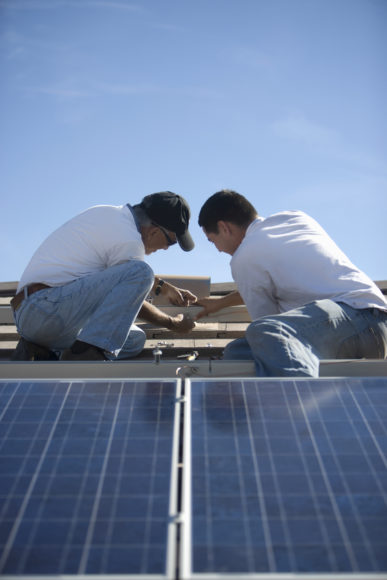Our homes are our personal spaces in which we live, work, play and recharge. Living through the pandemic these past two years, we have realized that our homes have become — have always been — a central part of our lives, and we want them not only to nurture us but to keep the environment healthy. In our ever-connected world, there are ways to help achieve these goals.
If you are building a new home or adding on to your home, consider a modular built home or addition. Modular homes are no longer unattractive, box-like structures. Increasingly, there are architects who specialize in prefabricated homes, customizing them to rival any traditionally built home. Constructed completely indoors in a controlled environment, they are energy efficient, environmentally friendly and can withstand extreme weather. Another consideration is the paint you use in your homes. As a designer, I always recommend low VOC (volatile organic compounds) paints. Low VOC paints have minimal odor and less toxic fumes while offering durable finishes. These paints are much healthier for the environment, humans and pets.
Green building or sustainable building uses many materials that reduce your carbon footprint as well. Although many of these features are more expensive to implement, they are also healthier for you and your family in the long run. There are many builders and contractors who specialize and are certified in green building — well worth exploring. If going all green is not an option for you, there are still areas in which a sustainable direction is worth the initial costs. Solar installations will decrease your energy costs, and you will probably have enough energy left over to get an electric car. Tap into that energy and not only save in your wallet but help the environment, too.
Replace old light bulbs with high-efficiency LED bulbs. These bulbs now come in warmer colors, so that you can be comfortable in your home and workspaces. Look for 2700K or 3000K color warmth for the most accurate daylight color. But any bulb uses energy, so turn off those lights when you leave the room.
Indoors, I like to use organic fabrics, and carpets made of wool or natural fibers that are sustainable. I try to opt for organic cleaners without harsh chemicals. Instead of using plastic containers, I go with glass ones. I often include vintage and antique furniture as well as lighting in my home. It’s truly a stylish way to recycle. (See Page 54.)
So be a traditionalist in some ways but a modernist in others. Smart homes include thermostats that can be regulated by a touch of your phone from a remote location. These thermostats are amazing and can be huge energy-saving devices.
There are many small ways to improve and care for your environment by taking a little extra time and doing the following things. Save energy and stay healthy by riding your bicycle. Garden: Growing your own vegetables is not only fun but being active in the garden is a great way to get in some exercise. Instead of blowing your leaves, rake them, adding to the health benefit and cutting down on noise pollution. Compost: Composting is great for the environment and your garden. Save water by using rainwater whenever possible to water your plants.
Being aware of nature makes you appreciate it more. Take walks through the woods, meadows and beaches and look at the way nature coexists with animals in their habitats. You’ll appreciate nature and, we hope, will want to help take care of it.
Happy Spring.
For more on Cami Weinstein Designs LLC, email Cami@camidesigns.com or call 914-447-6904.




